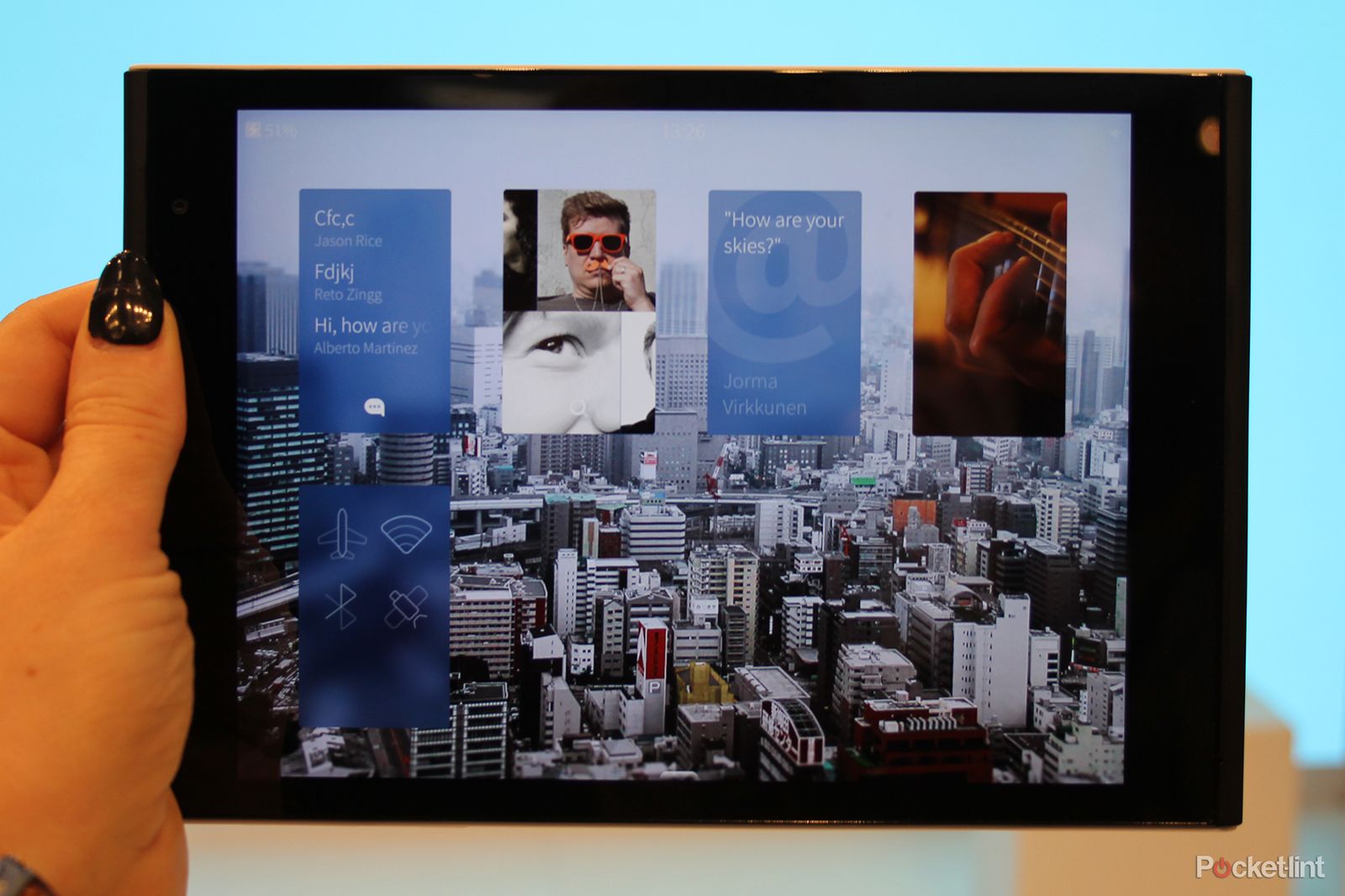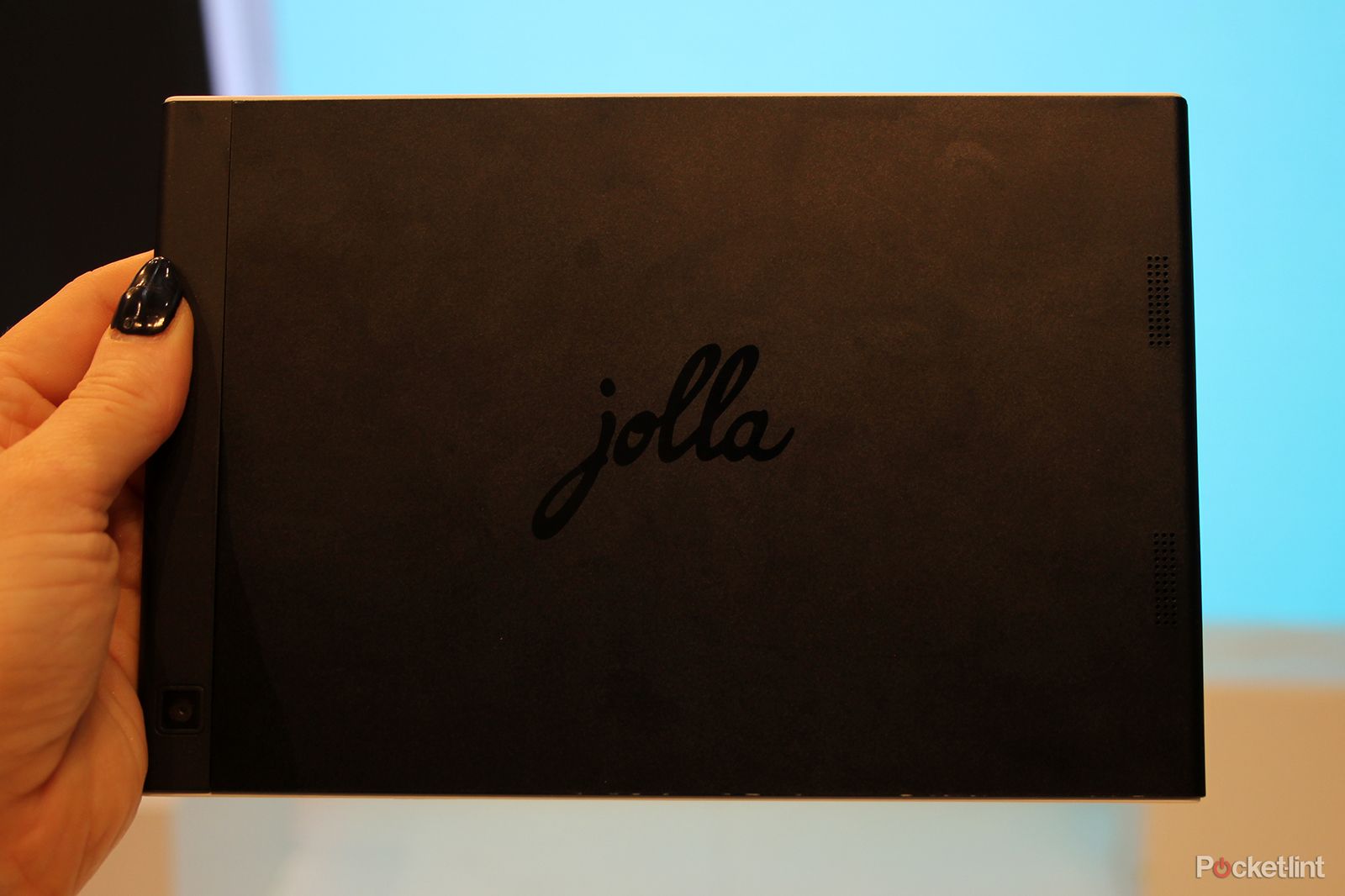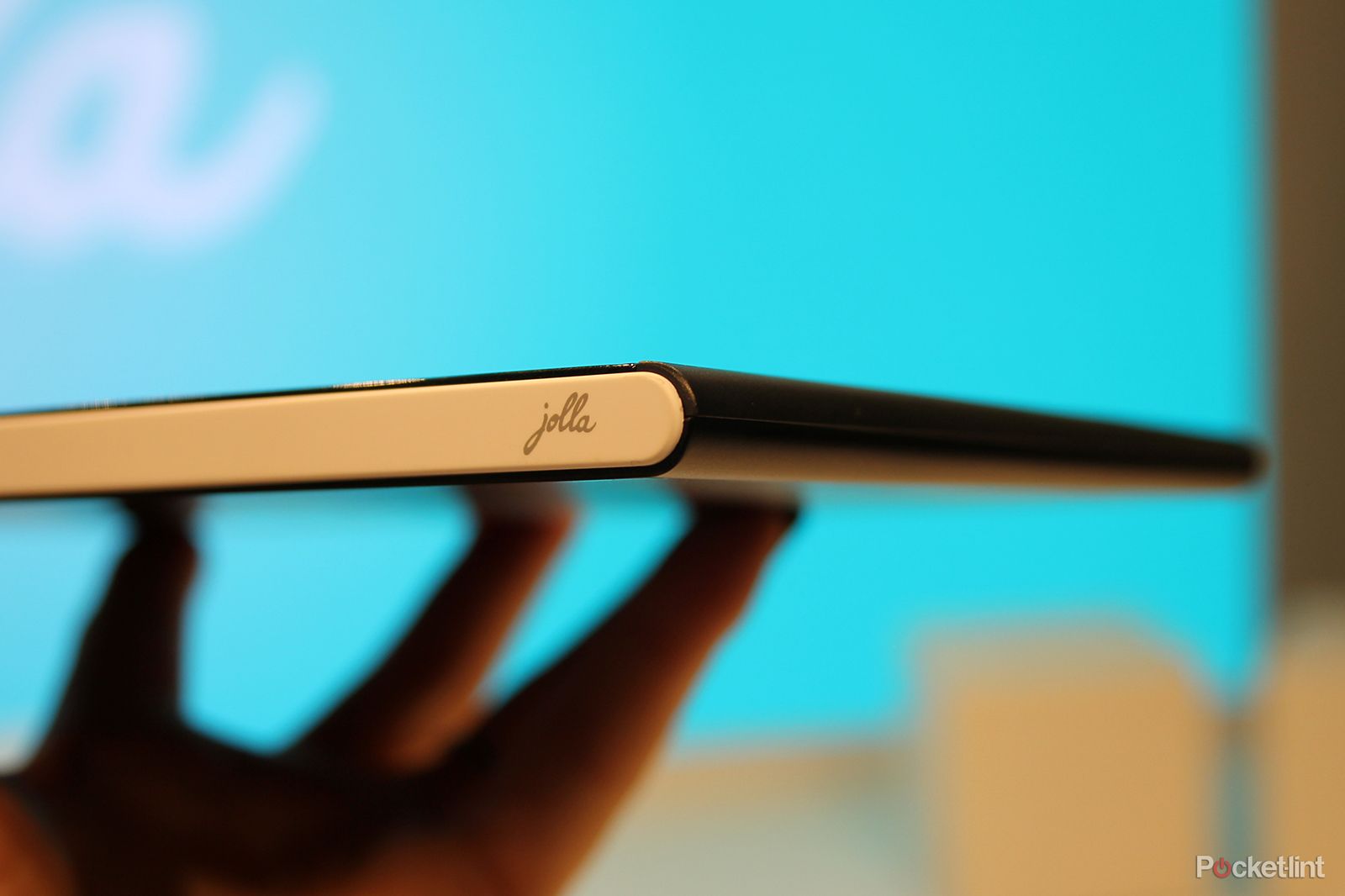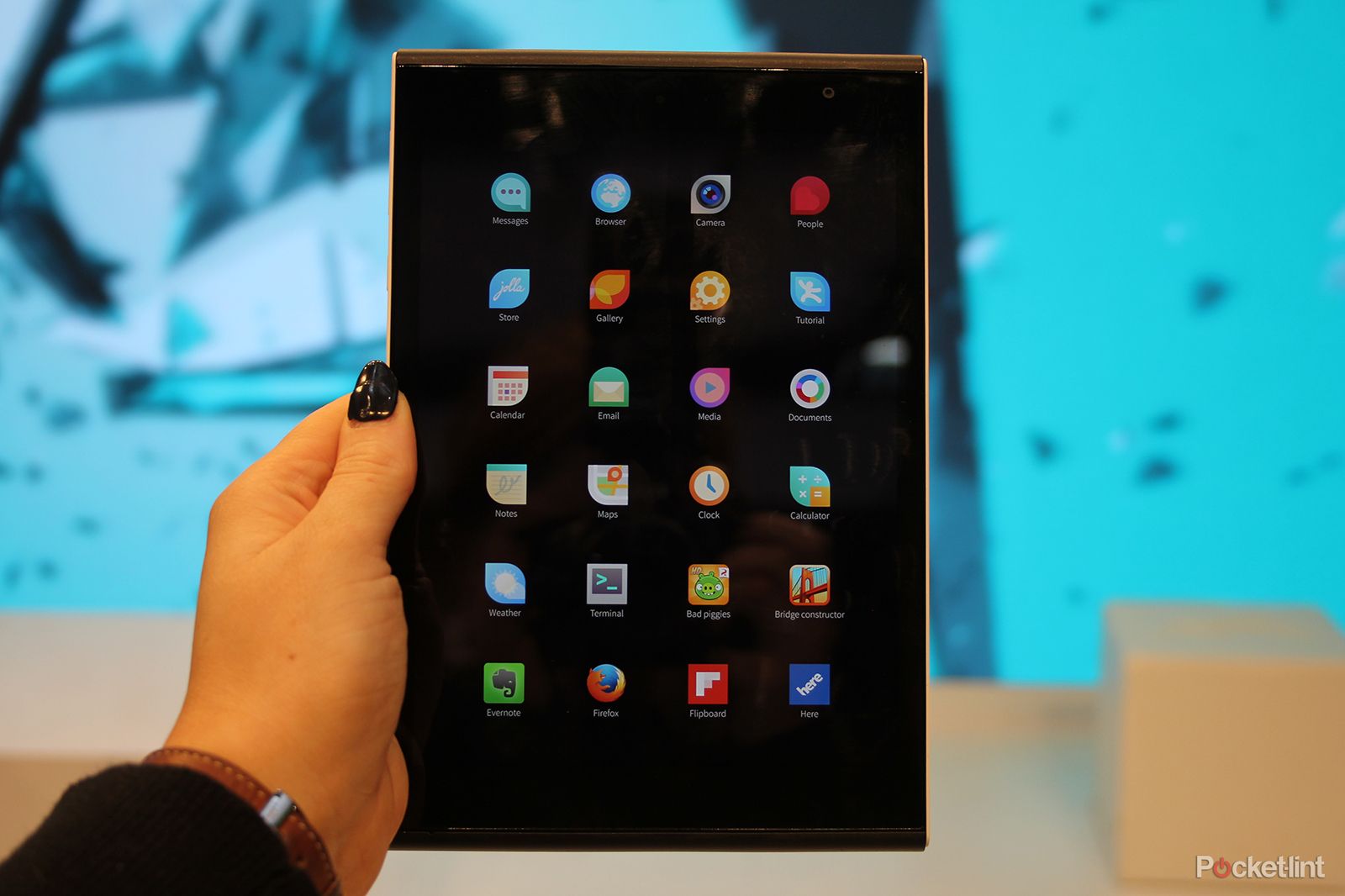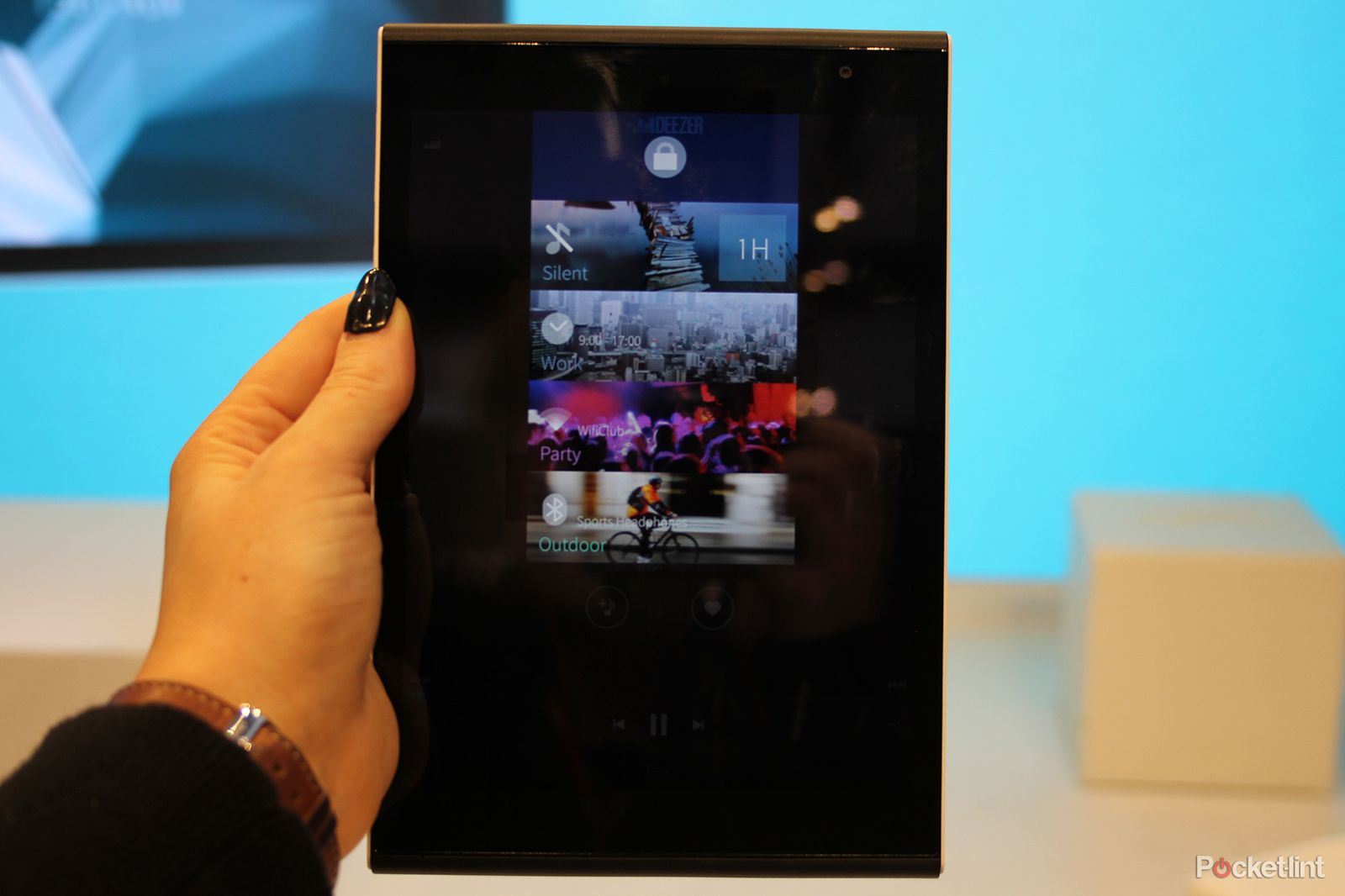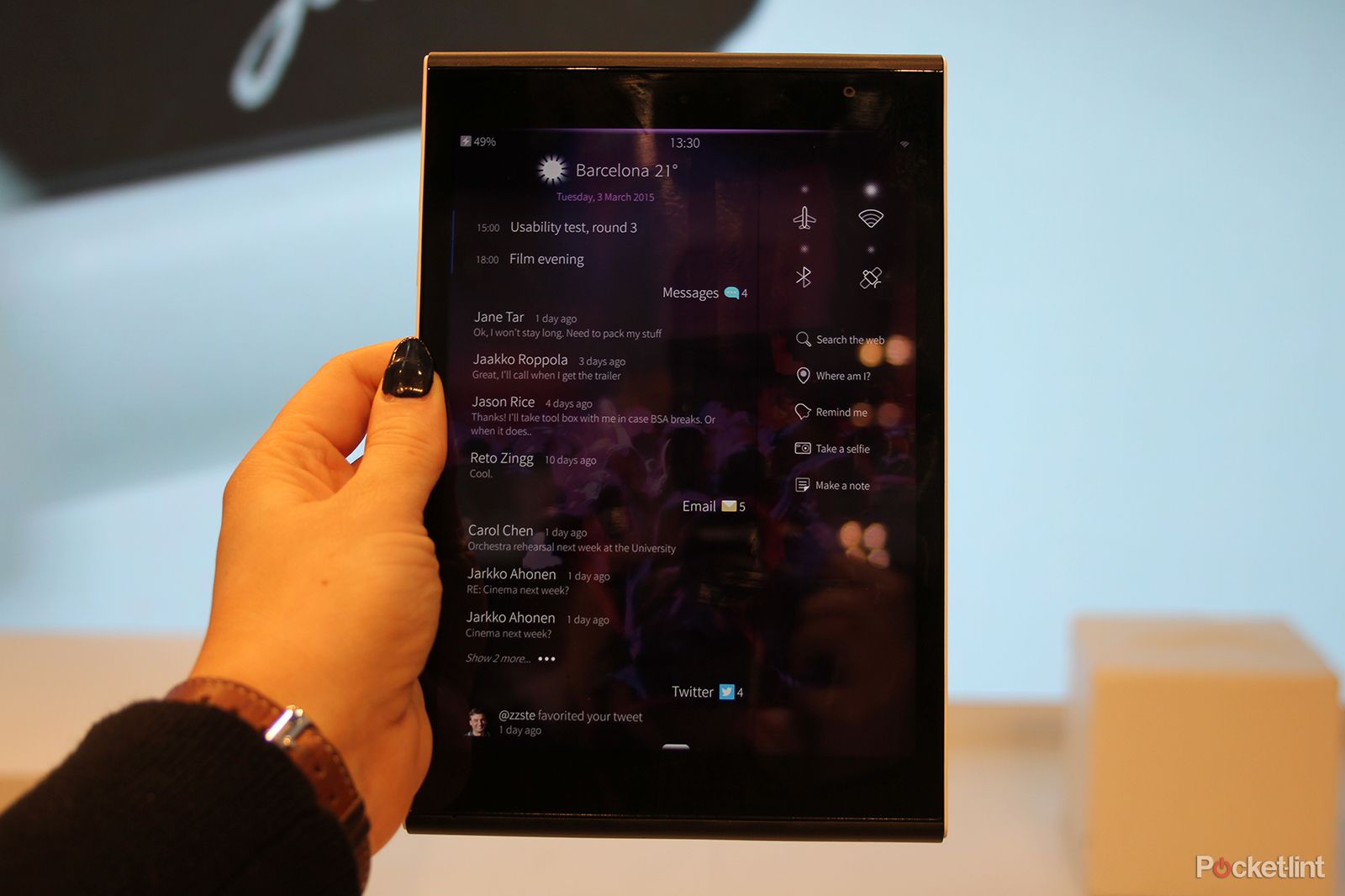Jolla is a Finnish company that launched a smartphone running on an open-source software called Sailfish back in November 2013 and it has since introduced a tablet running on the same OS, which we saw at Mobile World Congress.
The Jolla Tablet is a crowd-sourced project that came out of Indigogo after smashing its goal and it will launch in Q2 of this year with a refined version of the software, dubbed Sailfish OS 2.0. We got our hands on the Jolla Tablet at the show in Barcelona to see what we make of the new software and whether the tablet does enough to float our boat.
The Jolla Tablet is a very slick and sophisticated device with a slim profile and we really liked its design. It has curved edges on either side, which are finished in the same black plastic as the rear of the device, while the top and bottom are straight and finished in white.
You're not looking at the slimmest 7.85-inch tablet out there with the Jolla Tablet, but that doesn't really matter because it has a lovely finish that is easy to hold in one hand. It measures 203 x 137 x 8.3mm and hits the scales at 384g, which is nice and light.
The IPS display has a 2048 x 1536 resolution, which looked great from what we could tell in the time we had with it, offering bright, vibrant colours, a nice crisp image at 330ppi and decent viewing angles.
On the rear is a large Jolla logo that has a glossy finish in comparison to the rest of the area surrounding it. You'll find speakers on one edge and a 5-megaixel rear camera on the other edge, while the front sports a 2-megapixel snapper. We didn't get a chance to test the cameras, but they are pretty average in terms of numbers for this size tablet so we won't be expected DSLR-quality shots.
The Jolla Tablet's 4450mAh battery capacity is charged via Micro-USB and there is a microSD slot next to the port for expanding the 16GB or 32GB internal storage up to 128GB. The power button, volume rocker, headphone jack and small Jolla logo all sit on the opposite white edge, while both black edges are feature-free for simple, but effective finish.
Despite having a great design though, the most interesting thing about the Jolla Tablet isn't how it looks - it's how it runs. The Sailfish OS is built on the heritage of MeeGo, which was an open source operating system formerly developed by Nokia among others and it has been throughly refined since it's first appearance on the company's 2013 smartphone.
Sailfish isn't Android but it is compatible with Android apps and while it's full potential wasn't quite realised on the smartphone, the updated software has found its home on the tablet. You still get access to the likes of Facebook and Twitter, but there is also a Jolla Store rather than a Play Store and if you can't find what you're looking for, Jolla says "you can always make it". We also spotted the Amazon appstore too though, just in case you weren't feeling that creative.
Sailfish OS 2.0 comes with all sorts of neat tricks, such as swiping up from the bottom for the app launcher, or to the side to switch between apps, while another swipe will bring you to a social hub of some sort with all your accounts including Twitter, emails and your calendar events in one place.
Swiping from the top allows you can change the mode, each of which will prioritise various things from schedules and inboxes to apps. The model we played with had Work, Party and Outdoor modes for example and you can set them to change automatically based on your calendar, or you can manually choose the mode you want. We can see this being a handy feature as it means going from work to play nice and simple.
Multi-tasking is something Jolla has clearly put at the heart of the Sailfish OS 2.0 as there is also a "partner screen" that displays the functionality of a certain app, allowing you to control it from this screen, rather than opening the app in full. Deezer was the lucky app in the hot spot on the demo model, meaning we could change the music without any effort but it would also work for Netflix for example, enabling you to play or pause a video quickly without waiting for the entire app to load.
The Jolla Tablet has a 1.8GHz quad-core 64-bit Intel processor and 2GB of RAM under the hood, and although it was slick and fast, we couldn't judge it comparatively so we will wait until our full review to do so. We liked how the Sailfish OS 2.0 and the tablet itself looked and considering it smashed its Indigogo goal to raise over $2.25m, we clearly aren't the only ones.
It was very simple, but simple is good sometimes and it will be interesting to see how it performs in the real world. The device and software we played with at MWC wasn't final hardware so we won't pass judgement on it just yet but so far, so good. We liked what we saw and we are looking forward to seeing more of it when it arrives in Q2 for $249.

